Welcome to the Top 10 Dangerous Animals in Asia.
Asia is known as one of the world’s most crowded and greatest landmasses. Asia mainly covers the north and east regions of the earth, which has the world’s longest shoreline with low & high points around the earth’s area. Various countries are part of the Asia region, like India, Japan, Korea, China, Singapore, and some parts of the Middle East region.
Asia generally has a dry environment all through, with the most significant climate limits in the western region, and in the south, and east regions, rainstorms influence the most. Different kinds of habitats are found in Asia regions like metro regions, mountains & hills, highly dense forests, and low, dense forests. Such a huge and shifted scene with a few distant locales implies that Asian natural life is comparably assorted.
There are many zoos and centers for various animals in the Asia region. The majority of wildlife is found in zoos in Asia. Many visitors come to see the Giant Panda in Chengdu, which is known as the hometown of Giant Pandas, and many other places are there where one can see Giant pandas.
In India, Parambikulam is known as one of the significant spots to view Asian Elephants. In Sri Lanka, it’s Udawalawe where Asian Elephants are found. Asian black bears can be seen from July to October at Tat Kuang Si centre. And Asian tigers are found in various national parks of India like Panna, Kanha, Nagarahole, Ranthambore National Park.
Click below to jump to a section on the top 10 dangerous animals in Asia:
#1 Asian Elephant
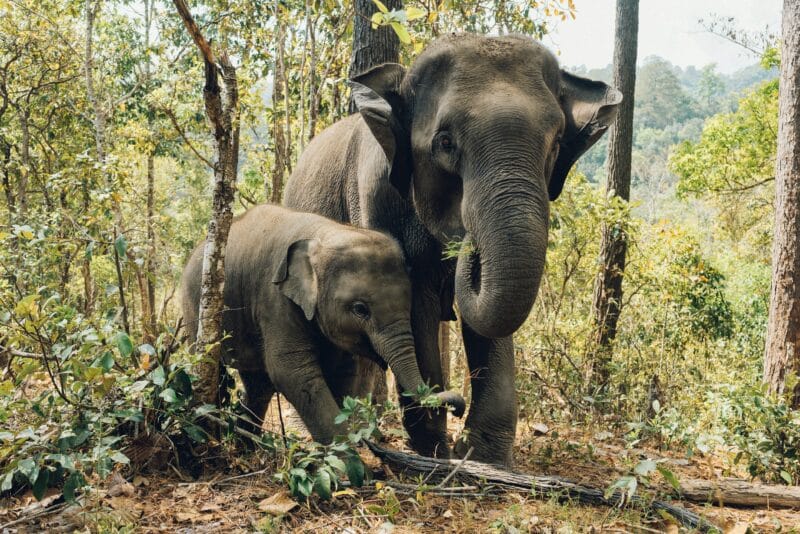
On size alone, the Asian elephant wins hands down. Standing almost 10 feet (3m) tall and gauging up to almost 8 tons, these are the second-greatest creature ashore. Yet, these are enormous cuddly elephants that are our companions.
Well, indeed, more often than not. Despite their colossal size, elephants are by and substantially timid and resigning commonly and can prevent a showdown with people. There are, in any case, two circumstances wherein elephants are best left alone; when in must and when with their young.
Thriving male elephants experience an occasional hormonal change referred to as musth. When in musth, a male elephant may need testosterone levels multiple times beyond typical. During this point, the bull elephant can end up being exceptionally forceful towards everything from different elephants to dull things and people. Female elephants can likewise be perilous after feeling their young are undermined.
In such circumstances, they will not wait to carry their considerable size in touch and obliterate whatever undermines it. While going after an Indian elephant will twist up its trunk and stomp on its casualty utilizing either its feet or knees (of which it’s four!). Male elephants will likewise gut enemies with their tusks.
There is yet another reason for elephant assaults – maverick elephants. These fantastic creatures are moderately uncommon yet genuine. Earning themselves a spot on the top 10 dangerous animals in Asia list.
#2 Crocodile
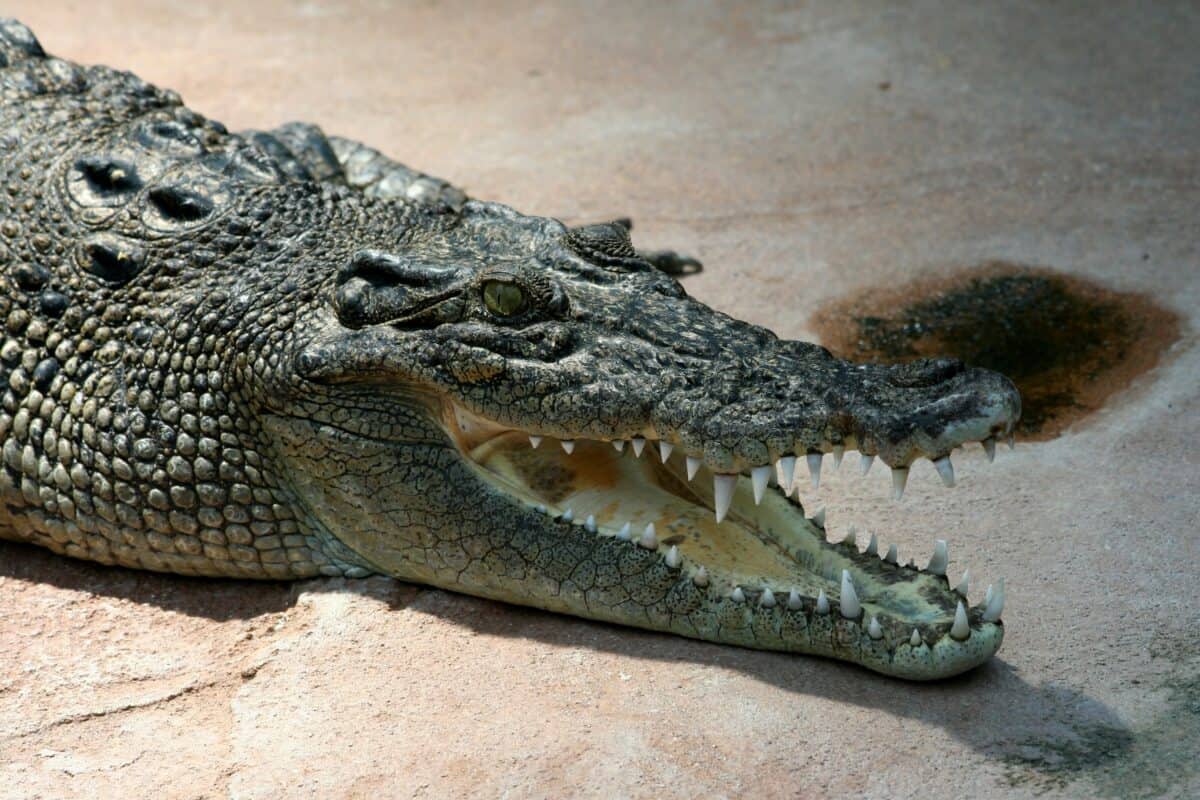
Asia is home to an assortment of crocodiles, from the implausible gazing gharial to the deadliest of all, the saltwater or estuarine crocodile. Simply taking a gander at the individual above should leave you with presumably that these aren’t a creature you wish to screw with. These are the best reptiles in the world and haven’t needed to alter much since the past.
Shield plated, shockingly quick both at some stage in water and provided with the foremost great chomp of any living animal.
Crocodiles have a recorded nibble force multiple times that of the incredible great white shark. Crocs aren’t particular eaters, possibly their sharp feeders meaning they’re going to eat nearly anything that comes in their direction. The crocodile method of hunting by and enormous includes ambushing prey by standing by underneath the surface or perhaps out of the water.
From here, they hit with lightning speed bracing their jaws shut and hauling the casualty into the water to suffocate.
Because the crocodile’s teeth are intended for grasping, not cutting tissue, they need two strategies for transforming their prey into reduced pieces.
One is to hide the cadaver and allow it to spoil; the opposite is the scandalous demise roll, where the croc turns again and again with the prey, ripping lumps off. As far as which is the most perilous, the principal competitors are the mugger crocodiles and also saltwater crocodiles.
The tremendous pungent wins give over in many regards and have even been known to require casualties within the untamed sea, many miles from land. Mugger crocodiles presumably kill as many individuals, however, as found for the duration of India and Pakistan, where they draw nearer contact with people.
#3 Asian Giant Hornet
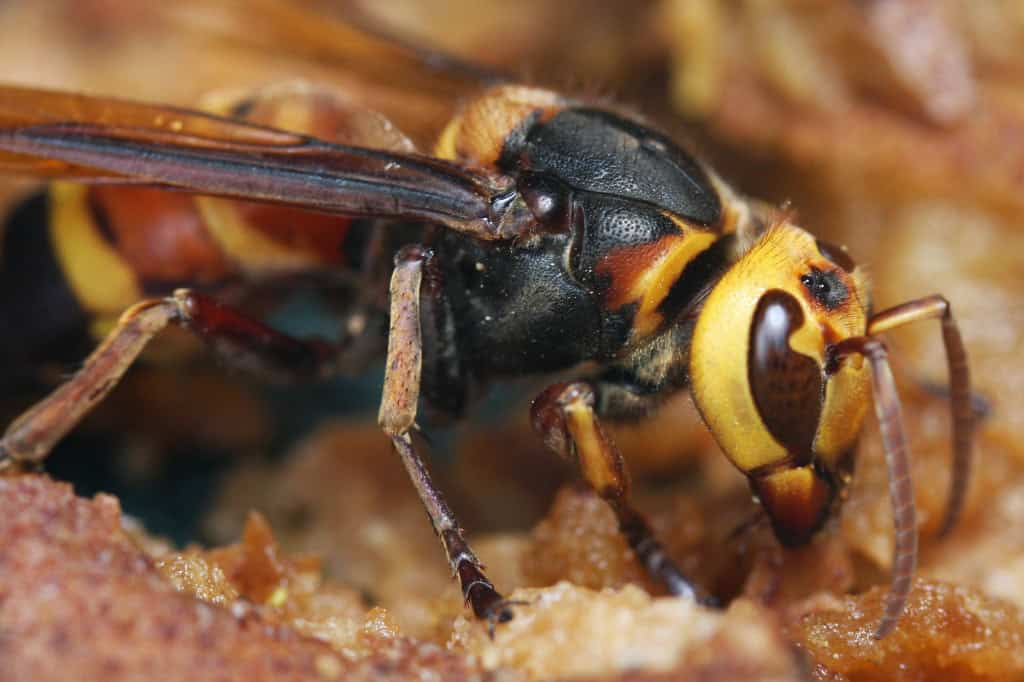
The Asian giant hornet, also known as the ‘yak killer,’ can grow over 2 inches long and has a sting about 1/4 inch long. Their venom, a mix of cytotoxins and neurotoxins, is especially harmful, causing intense pain and tissue damage.
One toxin, mandaratoxin, can be fatal in high doses, even for those not allergic to wasp stings. In Japan, these hornets are responsible for 30 to 40 deaths annually, making them the country’s most lethal animal.
Similarly, in China’s Shaanxi province, over 40 deaths were reported in three months. The general advice is to seek medical attention if stung more than 10 times, with over 30 stings being extremely dangerous.
#4 Sloth Bear
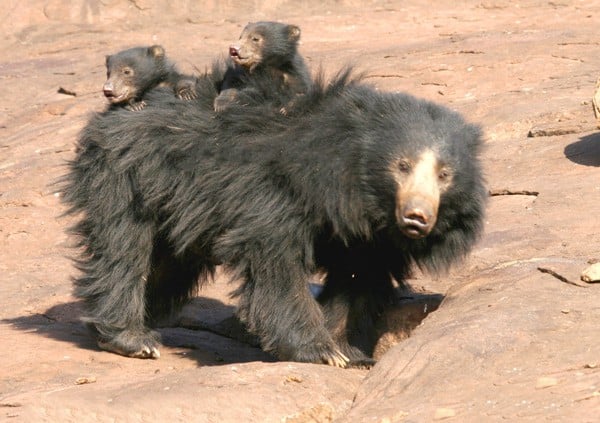
Notwithstanding having a hilarious appearance, gawky walk, and an eating regimen comprising to a good extent of bugs, the Melursus ursinus is one of Asia’s most dreaded creatures. Numerous tigers will give them a suitable compartment, while elephants and rhinos quite despise them and can charge them immediately.
Remaining around 6ft (2m) tall when upstanding, Sloth bears can tip the scales at up to 420 lbs (200kg) for a severe male.
They’re equipped with extremely lengthy, solid, and sickle-formed paws, which they use for digging termite hills up. These hooks make them the Freddy Krueger of the creature world. With numerous creatures, there’s A level of consistency in their behavior and often some exhortation on what to try to do on the off chance that it stood up to one – not so for the Melursus ursinus.
These creatures are as vulnerable to chase at the start. For reasons unknown, these creatures appear to own a selected abhorrence of individuals, and it’s figured that there’s around one assault every week in India. Maybe they resent all the abuse, for instance, being pursued and ready as moving bears or pets.
The multitude of creatures to be gone after by the Melursus ursinus truly is the last you maintain that it should be. They’re horrible and may make an absolute wreck with those grass-cutter-like paws and teeth. Furthermore, the foremost awful thing is that they select the face. it’s no distortion to mention that sloth bears rip their casualties go head to head. Up until this time, I’ve just discussed standard sloth bears.
What may well be said about when sloth bears burst the deep end?! Well, this occurred in Mysore, India, during the 1940s. The bear of Mysore purportedly went on a deadly frenzy killing no but 12 individuals and disfiguring handfuls more. All the casualties had their appearances torn and separated, with survivors losing lips, noses, and/or eyes.
#5 Bengal Tiger

The tiger was, for a time, revered as the ultimate predator. Stories range from colonial India days filled with massacred residents to when a brave white stalker stepped in to shoot the monster. However, how much truth is in these stories, and how dangerous is the tiger?
Indeed, there seems to be a lot of truth in the dangerous work. The Bengal tiger is the largest of the scaly group at a whopping 860 lbs (390 kg) and about 3.9 m long. Plus, as you can see above, those teeth are substantial, along with the proper arrangement of the hooks.
The tiger’s standard hunting strategy is to slash its victim with a throat lock and thus suffocate it. Prey can range in size from wild boar to 1 ton of bison. There are reports of tigers accounting for a few of the creatures on this list, though they never appear better than elephants.
It is clear that humans are not equivalent to the true rulers of the desert, but when in doubt, the tigers do not believe that we deserve to be provoked even though the tiger holds the record for killing more people than any other highly evolved wild creature. During the 1900s, it was estimated that tigers killed 1,000 individuals annually in India alone.
#6 Snakes
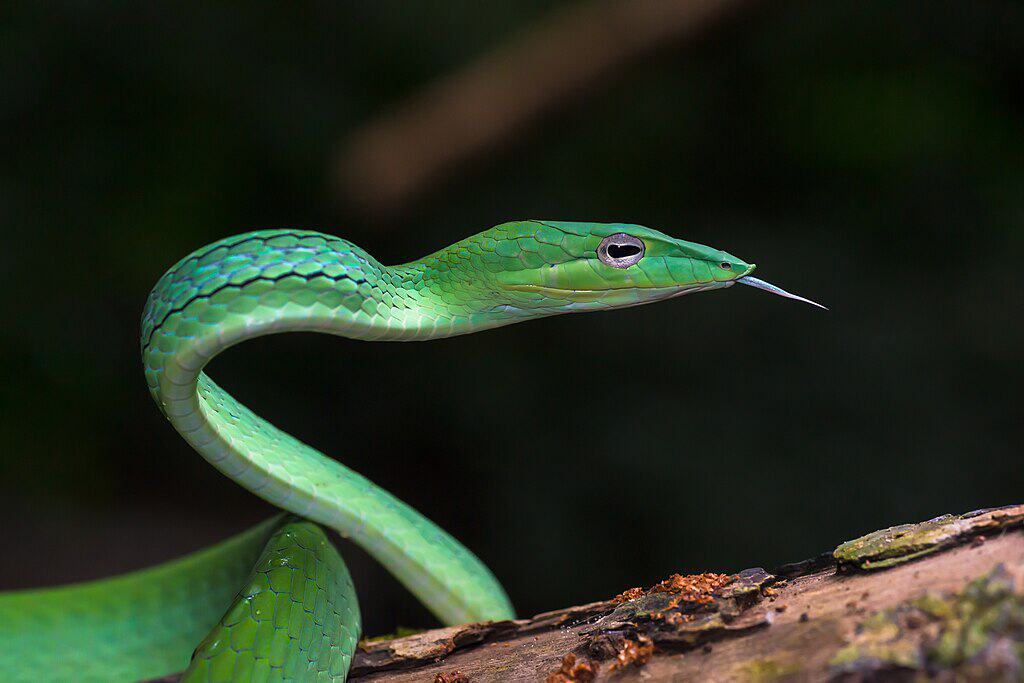
Although Australia can stay at home with the unique snakes on earth, only a few deaths are systematically. The story is entirely different in Asia, with operating meters within 15,000 and 60,000 passages continuously as an immediate response from Snakebites. Most of these passages occurred in India, even though Sri Lanka is all excessively affected by nibbling solid walkways.
Cobras are most widely recognized In these snakes and are responsible for most paragraphs. Average Cobra (Naja) has a deep nervous conductor that can be fatal by tissue prejudice. Many Cobras’ houses are far more significant (Ophiophagus Hannah) far away across Southeast Asia, and they are unique snakes on the planet.
Although the appearance of nearly 18 ft (5.5 m) and there is a thumb equipped to kill an elephant, the tiger snake king is not strong and will be held by people. From countless Cobra Egypt Cobra (Naja Haje) is the most dangerous, angry, and toxic to be founded. In Thailand, Most solid sections are presented by Cobra Monoclete (Naja Kaouthia).
They are night and are not strong, but they have an extremely intense toxic toxic toxic to kill for hours or less. The gathering of the giant dangerous snakes in Asia is that snakes are called well because of hot holes between the eyes and nose.
These are responsible for most sections in South Asia and Japan. In general, Russell’s solid is famous for each of them, which is responsible for more solid deaths than other snakes. It is enormous, regular, dynamic, and a pack of toxic mortality. This can cause internal death, corruption, kidney frustration, infections, and other things. No wonder snakes make it on the list of Asia’s top 10 dangerous animals.
#7 Indian Rhinoceros
Rhinos are the reservoir of the biological world. The massive, heavy, sturdy shield is plated and suitable for dealing with massive damage. The Indian rhinoceros is no exception and ranks as the fifth largest land creature on the planet, just behind various elephant species. An adult male rhino can weigh tons and be over 2 meters tall at the shoulder.
They also aren’t slow, with a top speed of 35 mph (nearly 60 km/h), and are surprisingly light for such a large creature. It is often said that rhinos disagree, which is partly true.
A lousy vision forces these creatures to charge first and ask questions later. Getting hit by an Indian rhinoceros would be like being hit by a truck with a horn in the front! There is nothing a rhino does not pursue; tigers, elephants, and trucks.
Unfortunately for rhinos, they are threatened by humans. Their horns are considered necessary in Chinese medicine, where rheumatic aids are accepted. Therefore, they are now an endangered species with numbers of up to two or three thousand individuals in northern India.
#8 Komodo Dragon
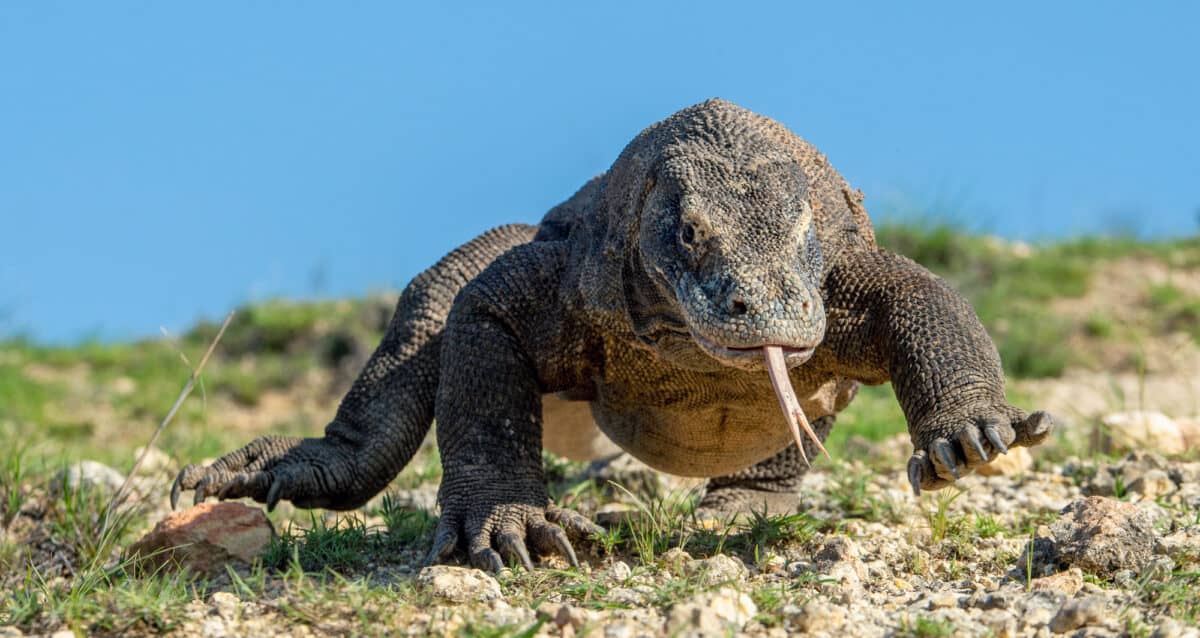
The mythical beasts of Komodo are the giant reptiles on the planet. The most prominent examples on the north side are 10 feet (3 m) long and weigh about 350 lb (160 kg). They live on several islands in the Indonesian archipelago, where they are part of protected animal groups. Their eating habits include everything found on the island.
The absence of regular hunters probably allowed them to become the avid hunters they are today. Armed with solid legs, powerful jaws, sharp serrated teeth, and protected scales, they are formidable creatures.
Komodos will accept prey as widely as water bison, but they do not use their size and abilities to do so. Instead, they use their absolute advantage, a mouth full of microorganisms.
The reptile only needs to chew its prey once, after which it can retreat to a protected distance and rest. This can happen for a very long time, with the Komodos following the poisoned animal, gradually kicking the creature out of the crate like the shadow of death itself.
The Winged Komodo Snake has many other evil tendencies, including scavenging for human graves to eat. Over time, various attacks have been carried out against humans, often with destructive results—no wonder they deserve mention on Asia’s top 10 dangerous animals.
#9 Sharks

All deadly “big three” sharks can be found in Asian waters; Great white sharks, tigers, and bulls can be seen here. Even so, the number of attacks is somewhat low, with official shark attack figures recording only 51 deaths since records began north of 00 so long ago.
It is almost certain that the actual number of crossings is underreported because there are many densely populated coastal areas where sharks are still common.
Hong Kong topped the chart, and many of these attacks occurred over a long period in the mid-1990s. Ten passages are believed to be from at least one tiger shark in the upper Sai Kung waters, the island’s east coast. Another place with a shocking number of shark attacks is Iran, the shark attack capital of the Middle East. This makes sense given the prevalence of bull sharks, which can be found in the Tiger Waterway and the Abseil estuary; these sharks can also tolerate freshwater.
The Philippines is home to the most deadly shark species in the world. Tigers, bull sharks, makos, and surprisingly excellent whites can often be seen here. In any case, the sea shark is the species that suffers the most in terms of loss of life from a shark attack. In 19 5, the cruiser USS Indianapolis was destroyed between Guam and the Philippines.
The boat quickly sank, but most of the party had to wait and were left at sea wearing life jackets. Early the next morning, the shark’s onslaught began. When they were rescued five days after the fact, only 300 of the first 900 survived. Sharks killed most. However, more sharks are killed by humans per year than shark attacks on humans annually. Still, they earn a spot on Asia’s top 10 dangerous animals.
#10 Fattail Scorpion

Fat-tailed scorpions can be found in the hot, dry regions of North Africa, the Middle East, and India. Does the name come from his big cock? Despite their discreet size (about inches / 10 cm), they have a deadly sting.
They are considered the most dangerous type of scorpion and are rarely considered executioners. Fattail toxin is a potent neurotoxin that is particularly effective. Death can occur within hours of the bite, with the pretext of loss of breathing movement. The good news is that an antibody toxin exists.
Summary top 10 Dangerous Animals in Asia
Many people have some creature fear, be it a feeling of dread toward sharks because of dramatic blockbusters or a frightfulness of anything that jerks and slithers; however, which species merit fearing? The response could amaze you. Fierce creatures of every kind imaginable can be tremendously destructive.
It’s simply an aspect of the motivation behind why creature backers and savvy local escorts generally prompt against contacting or interfacing with untamed life.
It is important to remember that these animals are considered dangerous because humans enter their homes, habitats, and stomping grounds without consent. These animals are dangerous to those beneath them in the food chain as they are dominant. Hence, it is essential to note that just like you wouldn’t be very friendly to an uninvited stranger in your home, the list of top 10 dangerous animals in Asia list are no different.
If you enjoyed reading the above, check out top 10 animals in the rainforest and top 10 most aggressive animals next!
Join our Forum for free today!

- These are The 5 Largest Great White Sharks Ever Recorded - July 19, 2024
- The Surprising Benefits of Big Game Hunting - July 18, 2024
- $100k+ Hunting Experiences The Most Expensive Animals to Pursue - July 17, 2024



